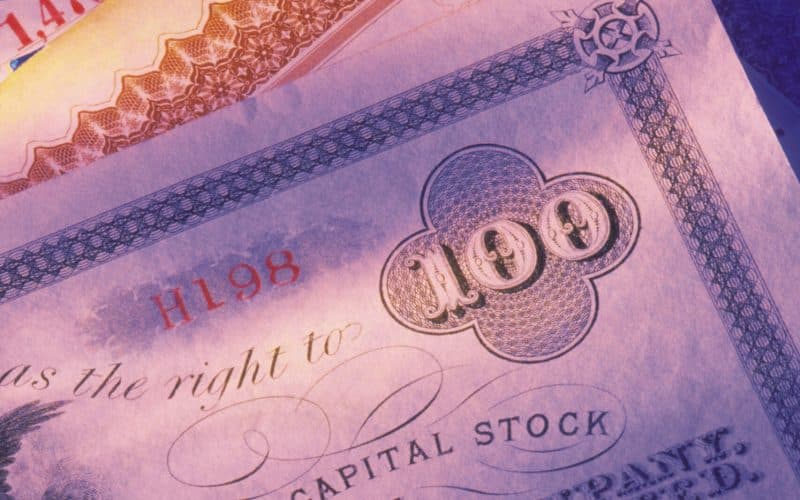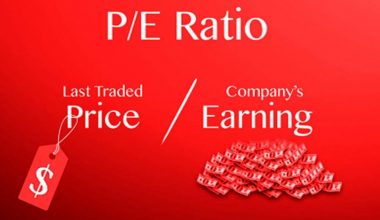How do you calculate common stock? What are the steps to using the formula when it comes to calculating common stock? Well, for starters, common stock means the number of shares of a business found on the balance sheet. Calculating your business’s common stock helps you find out exact ownership. It also helps to find out the security of that ownership. We will also go in-depth in this post on how to calculate common stock dividends, common stock on the balance sheet, and finally common stock equity and retained earnings.
Let’s hit the road…
How to Calculate Common Stock
Basically, we should know the meaning of common stocks before trying to figure out how to calculate them. Therefore, you can define common stock as the number of shares of a business that you can typically find on the balance sheet. The common stockholders that you might hear about from time to time are typically the business owners. This means that they have voting rights as well as an opportunity to earn some amount of dividends. Common stockholders can be in the form of the business’s promoters, insiders, or even outside investors.
Also, from another angle, you can say that common stock refers to the type of security for ownership of a business. Such ownership is such that the holder of such securities will have voting rights that he/she can use for various corporate purposes. Some of those occasions where they use these rights include the selection of the board of directors or other major corporate decisions.
Formulas of Common Stock
Now there are two methods of formula for solving common stock of a and they include;
Common Stock (Outstanding Shares) = Number of Issued Shares –Treasury Stocks
Common Stock = Total Equity – Preferred Stock – Additional Paid-in Capital – Retained Earnings + Treasury Stock
Investopedia
For the second formula, you should note that there is no preferred stock, additional paid-in capital, or treasury stock. When this becomes the case, the formula for common stock simply changes to the total equity minus retained earnings. This is typically the case for most smaller companies that have only one class of stock.
How to Calculate Common Stock Dividend
All businesses that make earnings or profits always return them to shareholders in a form called a “dividend payment.” The shareholders who own the business appoint dates on when exactly they will issue dividends to them at a dividend-per-share rate.
But how you calculate common stock dividends determines or sums up shareholders’ per share rate of dividend. This calculation can also aid shareholders in determining the consistency and the productivity of a business’s dividend payment.
Meanwhile, when the board of directors of a business issues a dividend, three major dates are important. The first is the declaration date—when the board makes up its mind to issue a dividend and then declares how much the dividend will pay.
Secondly, is the ex-dividend date, which is the most important to shareholders. This is because it is the date before which the stock must be bought so that a shareholder can receive a dividend.
The last date of importance is the record date, and it is when they now typically give shareholders their dividends, which, in most cases, takes place two days after the ex-dividend date.
Understanding Common Stock Dividend
You should also note that when the business announces dividends, it will automatically issue the dividend figure as the total payment. This is very important to shareholders. It is important because they can calculate the dividends on the business shares by simply multiplying the dividend-per-share by the number of shares in the agreement. However, some businesses pay dividends every quarter of the year. Others issue dividends periodically, like mature businesses that have arrived at consistent growth. This is because growing businesses still have to reinvest their profits back into the business for bigger earnings. This, in turn, will result in higher dividend shares for shareholders.
Furthermore, how do you calculate a dividend for a dividend-paying stock’s productivity? You can achieve this through its dividend yield. Also, you can simply calculate the dividend yield by dividing the current share price by the annual dividend-per-share price. This is the major idea on how to get dividend common stock.
How to Calculate Common Stock on the Balance Sheet
You can also call it stockholders’ equity or shareholder equity. This is because they are the same. And also, they typically mean an account on a business balance sheet that consists of share capital plus retained earnings. It also represents, in a business, the residual value of assets minus the liabilities.
Stockholders’ equity serves a very useful purpose when analyzing the financial statements of a business. However, how to calculate common stock on the balance sheet first appears as stockholders’ equity on the balance sheet. Equity shareholders are also last in line behind debt holders to receive any payments on the balance sheet. This typically means that the business pays the bondholders before the equity holders.
Although the debt holders do not find interest in the value of equity, which is above the general amount of equity, this is also the general amount that is used to determine overall solvency. Furthermore, shareholders should concern themselves with both liabilities and equity accounts. This is because stockholders’ equity will get their pay only after bondholders get theirs.
In a situation, where you want to determine the total of common stock in a business, the information you need to find is right on the stockholder’s equity section of its balance sheet.
Here are a few steps that can assist you in finding the important information you need as well as what they mean. The different kinds of stock I’m about to outline have different share counts and I will explain what they mean below
Stock: Common vs. Preferred
There are mainly two forms of common stock you will see on the balance sheet. The first is preferred stock, which is similar to a bond. This is because it pays a fixed dividend, and has a higher priority when the business pays dividends. However, the significant differences between preferred stockholders and bondholders means that while preferred stockholders have no voting rights, they are also lower on the scaling pole than bondholders.
Common stock basically signifies ownership rights in a business. Although common shareholders have voting rights, there are also some other terms that you can use to describe the number of shares a business has. These terms include;
- Authorized shares
- Issued shares
- Outstanding shares
- Par value
This means that when you see any of the above terms, they suggest the number of shares a business has. Now you can typically represent in a formula how to calculate common stock on a balance sheet. which looks like this;
Assets = Liabilities + Stockholders’ Equity
Stockholders Equity = Assets – Liabilities.
How to Calculate Common Stock Equity
Before we start off on how to calculate common stock equity, we first need to know the details of what common stock equity means. Most businesses now describe common stock equity as shareholders’ equity, which is not wrong because it is typically its definition. Common stock equity represents the net worth of a company. This is basically the dollar amount that you would return to shareholders if a company liquidates its total assets, and repay all of its debts.
Most businesses use this financial system to analyze and result in the business’s financial state over a particular period of time. You can also use shareholders’ equity to result in the value of ratios, like the debt-to-equity ratio (D/E), return on equity (ROE), and the book value of equity per share (BVPS). Furthermore, there are many components that you can use to determine the common stock of a business, and they include:
- Share Capital: This is the first component, meaning the amounts received by the reporting entity from transactions with its owners. This is typically what a business refers to as share capital.
- Retained Earnings: These are the amounts earned through income and are also known as accumulated other comprehensive income.
- Net Income & Dividends: In this component, you should note that net income increases retained earnings. And then, dividend payments reduce retained earnings.
Lastly, and answering our objective question of how to calculate common stock equity. Now, shareholders calculate equity by subtracting their total liabilities from their total assets. Both of these items can be found on the business’s balance sheet.
How to Calculate Common Stock and Retained Earnings
Retained earnings are the portion of a business’s profits that the business does not give out as dividends to shareholders but instead reserves for reinvestment back into the business. The business normally uses these funds for working capital and fixed asset purchases or allotments for paying off debt obligations.
To calculate retained earnings, add net income to or subtract any net losses from beginning retained earnings and subtract any dividends paid to shareholders. To calculate retained earnings, subtract a company’s liabilities from its assets to get your stockholder equity, then find the common stock line item on your balance sheet and take the total stockholder equity and subtract the common stock line item figure (if the only two items in your stockholder equity are common stock and retained earnings).
On the asset side of a balance sheet, you will find retained earnings. This represents capital that the company has made in income during its history and chosen to hold onto rather than pay out dividends. On the balance sheet, you can usually directly find what the retained earnings of the company are, but even if it doesn’t, you can use other figures to calculate the sum.
Follow these two steps to calculate your retained earnings:
- Subtract a company’s liabilities from its assets to get your stockholder equity.
- Find the common stock line item on your balance sheet. If the only two items in your stockholder equity are common stock and retained earnings, simply take the total stockholder equity and subtract the common stock line item figure. The difference is retained earnings.
However, even though the knowledge of how to calculate common stock and retained earnings seems easy, note also that there are businesses with more complex balance sheets that include more line items and numbers.
What is common stock with example?
In other words, it’s a method of allocating corporate ownership; as a result, each share of common stock corresponds to a certain proportion of a corporation.
What is meant by common stock?
Common stocks are securities that indicate a person’s ownership in a particular firm and their right to share in the venture’s profits. Such a stock option grants people the right to vote for the company’s board of directors and also gives them the ability to influence business policy.
What is the value of common stock?
The closing price of the common stock on the final trading day before the day the common stock is to be valued is referred to as the stock’s value. The value of the common stock for this purpose shall not be adjusted for vesting.
Is common stock a percentage?
There should be a “common stock” section that includes information on both the approved and issued share counts. To convert the number of issued shares to a percentage, divide it by the total number of authorized shares and then multiply the result by 100.
What is common stock made up of?
Common stocks are listed on the balance sheet as the total number of a company’s shares. The company’s owners are its common stockholders, who also have voting rights and are entitled to dividends. They could be outside investors, insiders, or firm promoters.
How to calculate how many shares of common stock are outstanding?
The number of issued shares less the number of shares kept in the company’s treasury equals the number of stocks outstanding. Additionally, it is equal to the float plus any restricted shares (shares that are available to the general public but do not include any restricted shares, insider shares, or shares held by corporate officers).
Conclusion
In conclusion, understanding what common stock means is not enough because you typically need that knowledge to get the main results, which are knowing how to calculate common stock, common stock and equity, common stock and dividend, and, lastly, common stock and retained earnings. You can’t doubt that every company or business typically needs to properly calculate this stock in order to enhance real growth.
FAQs
How do you find common stock on a balance sheet?
If you want to find out the total of common stock a company has, the information can be found right on the stockholder’s equity section of its balance sheet.
How do i calculate common stock in stockholder's equity?
Stockholders’ equity refers to the assets remaining in a business once all liabilities have been settled. This figure is calculated by subtracting total liabilities from total assets. Alternatively, it can be calculated by taking the sum of share capital and retained earnings, less treasury stock.
Is common stock an asset or equity?
So, can common stock be classed as either an asset or a liability? No, common stock is neither an asset nor a liability. Common stock is equity.
What are examples of common stock?
One share of common stock represents a percentage ownership share of a corporation. For example, if a company had 100 shares outstanding, one share would be equal to one percent of the company.
Related Articles
- Stockholder Equity: How To Calculate Stockholders’ Equity
- Income Summary Account: Overview & All You Need To Know
- RETENTION RATIO: How to Calculate it with Examples
- Dividend Yield: Meaning, Detailed Examples, Formula & Free Investor Tips
- FAIR MARKET VALUE: How Fair Market Value Is Calculated
- DEMARKETING ADS: Types, Strategies, Examples, and Case Study






